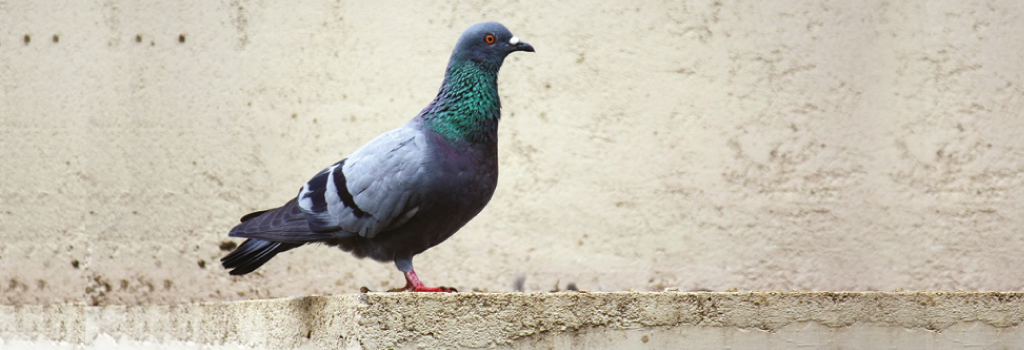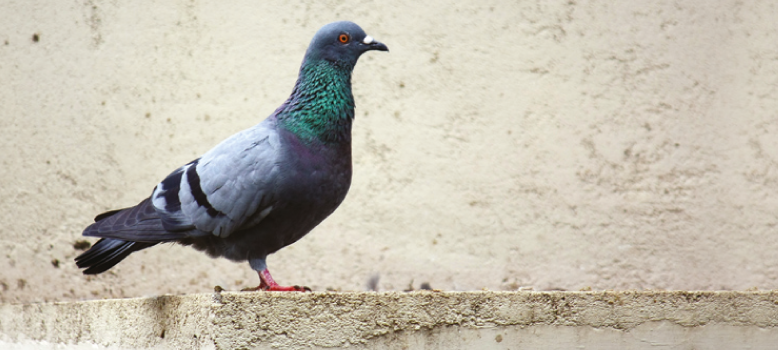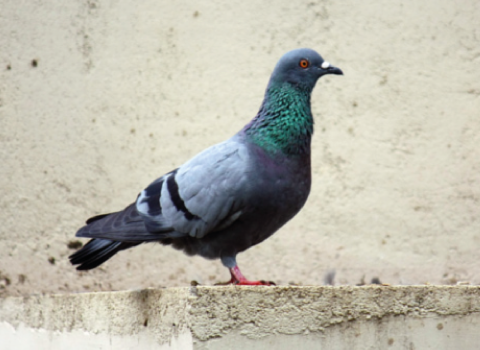Pigeon
We probably all recognise a pigeon as they are the most common urban bird. There are between 10-15 million feral pigeons in Europe. Their numbers are entirely dependent on the availability of food and when it is plentiful they can breed between four and six times in a year.
Latin Name: Columba livia (‘dove’ or ‘bird of leaden or blue-grey colour’).
Common Names: Pigeon, dove, blue rock pigeon, rock dove, wild rock pigeon, rock pigeon, feral pigeon.
Derivation: The word ‘pigeon’ is derived from the Latin word ‘pipio’, meaning ‘young cheeping bird’. The word ‘dove’ is of Norse origin and first appeared in the 14th century as ‘dova’ or ‘douve’.
Bird Order: Columbiformes
Family: Columbidae (includes 315 different species)
Subspecies: C. l. livia, C. l. atlantis, C. l. canariensis, C. l. gymnocyclus, C. l. targia, C. l. nigricans, C. l. dakhlae, C. l. schimperi, C. l. intermedia, C. l. palaestinae, C. l. gaddi, C. l. neglecta
Varieties: 350 recorded varieties.
Most Common: Feral Pigeon – 10-15 million in Europe.
Origin: Europe, North Africa and Asia.
Habitat: The wild pigeon is found in coastal areas and the feral pigeon is found almost exclusively in areas of human habitation.
Distribution: Worldwide except Sahara Desert, Antarctica and the high Arctic. European population estimated at between 17 and 28 million birds.
Description (adult of the nominate subspecies of the rock pigeon):
· 32-37 cm long
· 64-72 cm wingspan
· Dark bluish-grey head, neck and chest with glossy greenish and reddish-purple iridescence around the neck and wing feathers
· Orange or red iris with pale inner ring (adult) or brown or greyish brown (juveniles)
· Black bill with off-white cere
· Red feet and legs
· Distinctive twin black wing bars
· White lower back feathers
Reproduction:
· Breeds all year round with peak breeding periods in spring and summer
· All columbiformes are monogamous (mate for life)
· Wild birds breed on coastal cliffs and some inland cliffs
· Feral birds breed on or in buildings, usually in urban areas
· Flimsy nest built on rocky shelf (wild) or accessible ledge on a building or in the roof void of a building (feral)
· Two white eggs that are incubated by both parents for 17-19 days
· The squab (chick) has yellow down and a pink bill
· Squabs are fed on ‘crop milk’ by both parents
· Fledging period is approximately 30 days depending on time of year
· Pigeons can breed at 6 months of age
Diet: Seeds form the major component of the diet, but it varies greatly according to species. Some ground feeding species (granivorous species) eat fruit and take insects and worms. One species, the Atoll Fruit Dove, has adapted to taking insects and small reptiles. The feral pigeon found in urban areas exists exclusively on a diet of seed (normally from human sources) and human refuse, such as fast food waste. Wood pigeons have a varied diet which includes vegetables and berries.
Life Expectancy: Varies greatly from 3-5 years through to 15 years dependent on many factors, including natural predation and human interference.




